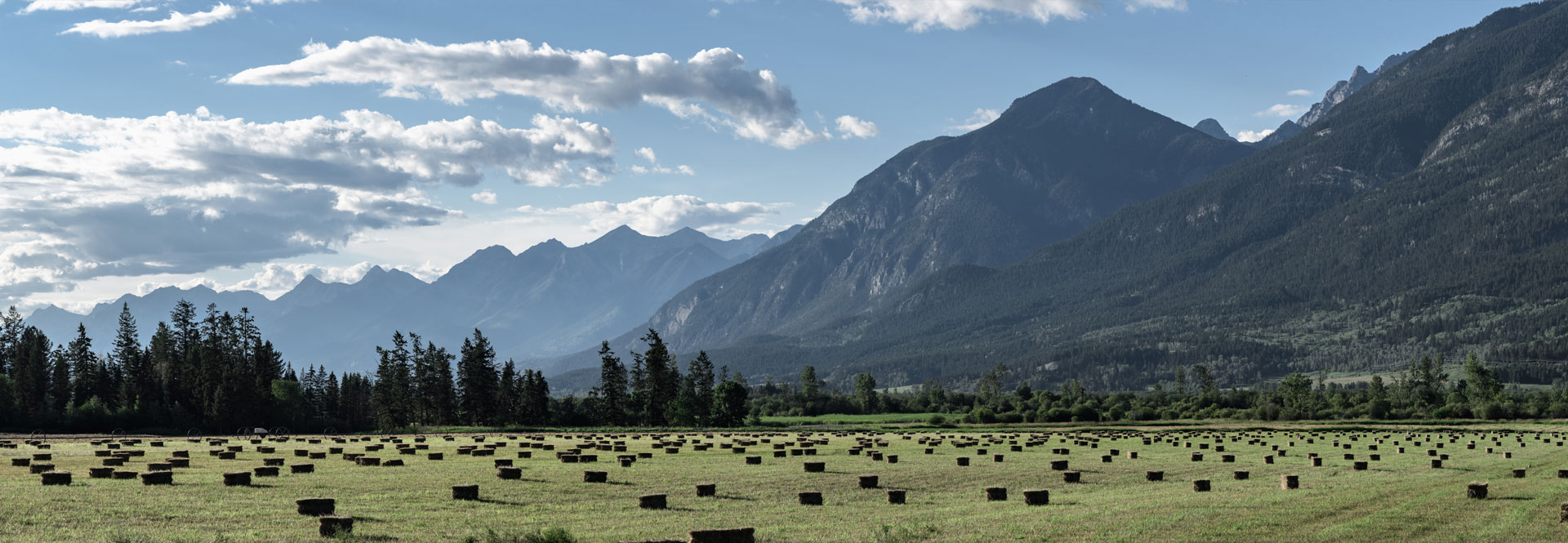ALR History
The Agricultural Land Reserve Designation History
Under the 1973 Land Commission Act (the precursor to the ALC Act), the 28 Regional Districts in the province of BC were required to submit an agricultural reserve plan to the ALC for consideration.
To aid Regional Districts and provide guidance, the provincial Ministry of Agriculture prepared suggested ALR maps that identified lands having the soil and climate combination to support agriculture.
These maps were based on soil surveys and the Canadian Land Inventory (CLI) agricultural capability data, combined with proposed urban expansion areas on lower capability lands.
Regional Districts made recommendations to the ALC and the maps were reviewed to ensure technical consistency with the reserves across the province. In general, the following methodology was applied:
- All Class 1 to 4 land (CLI) that were not already developed were included in the ALR, both Crown and private land;
- If non-agricultural land was not immediately available for urban expansion, enough land was excluded to allow for about 5 years of community growth to ensure local governments had a reasonable amount of time to redirect future growth patterns;
- Class 5 and 6 lands (CLI) where historic land use patterns indicated that such land could effectively be used for agriculture in conjunction with Class 1 to 4 land, including the spring and summer grazing ranges in ranching areas of the province, were included; and,
- Small pockets of Class 7 land where exclusion of such land might have allowed undesirable intrusion or incompatibles uses into agricultural areas were included.
Following the ALC’s review, the plans along with the ALC’s recommended changes were approved by Cabinet. The process of establishing the ALR took 1½ years.
Scientific Basis for the ALR
The ALR boundary is based on biophysical information related to the natural characteristics of the land and its climate. The intention was to set boundaries on objective technical characteristics, rather than on the variables of the market and other socioeconomic conditions. The Commission used the Canada Land Inventory (CLI) as a uniform, province-wide land classification to fairly and equitably identify the zone. Regional governments submitted Agricultural Land Reserve plans to the Commission based on ALC guidelines and on maps, provided by the BC Department of Agriculture, which identified lands that have the soil/climate combination to support agriculture, and that were not already urbanized or otherwise irreversibly alienated.
Additional resources on the history of the ALR
- 50 Years of the Agricultural Land Commission – ALC, 2023
- A Work in Progress: The BC Farmland Preservation Program – Smith, 2012
- BC’s Agricultural Land Reserve: Its Historical Roots – Runka, 2006
- Preserving our Foodlands – ALC, 2002
- Stakes in the Ground – Quayle, 1998
- ALR Historical Binder On the ALR – ALC, 1995
- PIBC News Agricultural Land Commission – Planning Institute of BC, 1993
- Ten Years of Agricultural Land Preservation – ALC, 1983
- Protecting BC Farmland – ALC, 1979
- BC’s Agricultural Land Preservation Program – Runka, 1977
- Ill Fares the Land – Rawson, 1976
- Keeping the Options Open – ALC, 1975
- BC Land Commission Act: A Review – Baxter, 1974
- Bill 42 Land Commission Act, 1973
- Land Commission Significance to BC Agriculture – Lane, 1973

